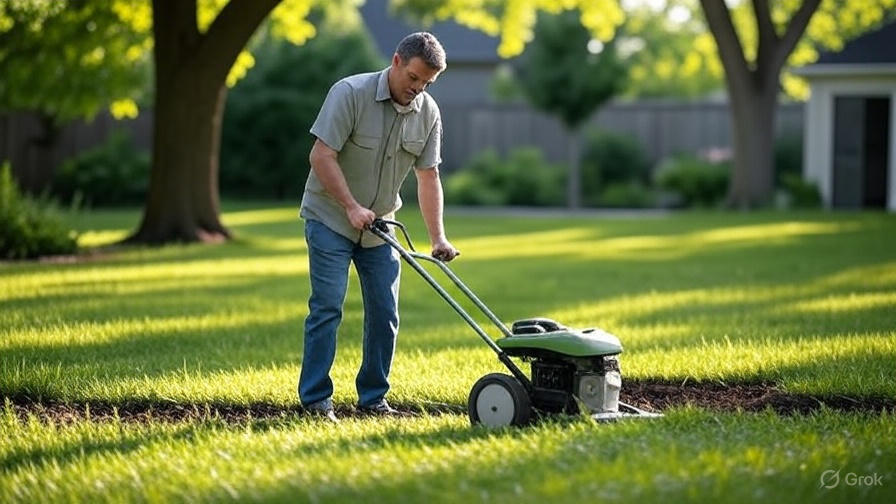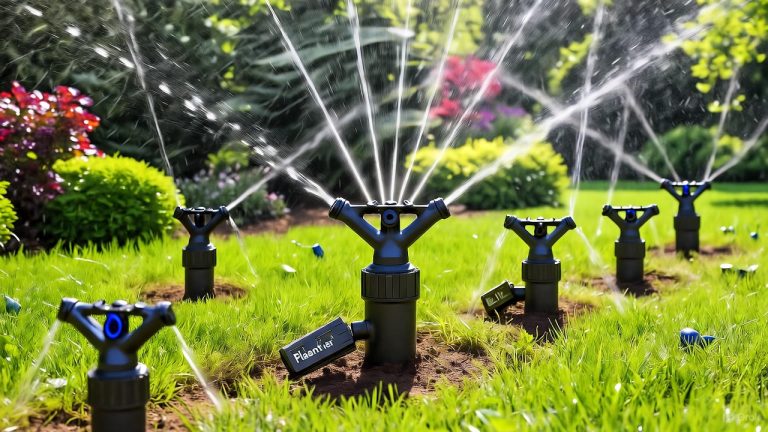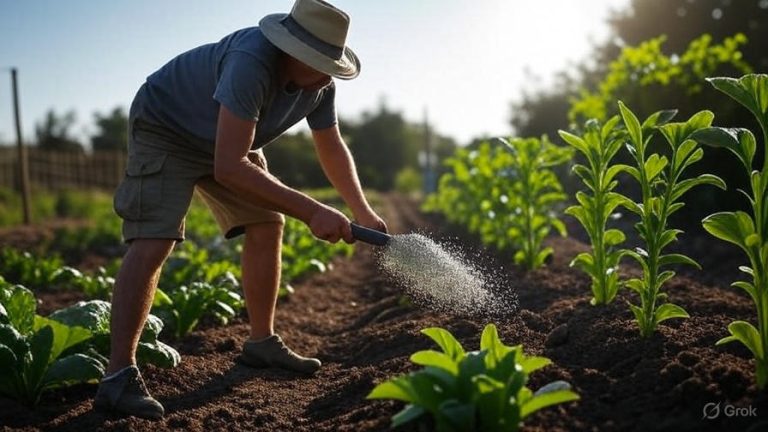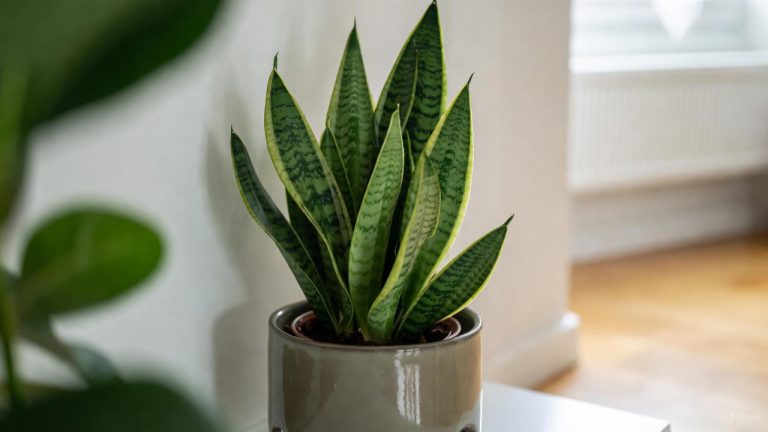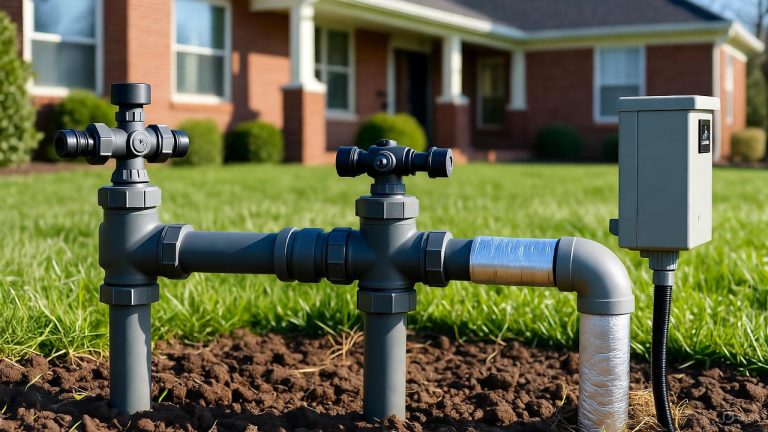How to Aerate a Lawn?
Your lawn feels like concrete underfoot. Water pools on the surface after rain instead of soaking in. Grass grows in patchy, weak clumps despite your best efforts with fertilizer and watering. These problems all point to one culprit: soil compaction.
Lawn aeration solves this issue by creating small holes throughout your yard, allowing air, water, and nutrients to penetrate deep into the root zone. This process transforms struggling grass into a lush, healthy lawn that becomes the envy of your neighborhood.
Why Your Lawn Needs Aeration
Soil compaction happens naturally over time. Foot traffic, heavy machinery, and even regular mowing gradually compress soil particles together. This compression creates a barrier that prevents essential elements from reaching grass roots.
Compacted soil restricts root growth, forcing grass plants to struggle for survival in the top inch of earth. Roots cannot spread deep or wide, making your lawn vulnerable to drought, disease, and pest damage. The grass becomes thin and weak, creating perfect conditions for weeds to take over.
Hard clay soils compact more easily than sandy soils. However, any lawn type benefits from regular aeration, especially high-traffic areas around patios, walkways, and play areas.
Signs Your Lawn Desperately Needs Aeration
Several clear indicators tell you when aeration becomes necessary. Water runoff after irrigation or rainfall suggests soil cannot absorb moisture properly. You can test this by watering a small area and watching how quickly water penetrates the ground.
Thatch buildup creates another obvious sign. Thatch consists of dead grass stems, roots, and debris that accumulate between the soil surface and green grass blades. A thin layer of thatch actually helps retain moisture and protect roots. However, layers thicker than half an inch block air and water movement.
Hard, compacted soil presents the most obvious symptom. Push a screwdriver or similar tool into your lawn. If you struggle to penetrate more than two inches, your soil needs aeration immediately.
Bare spots and patchy grass growth also indicate compaction problems. Grass simply cannot establish strong root systems in compressed soil, leading to weak, sparse coverage that invites weed invasion.
Best Times to Aerate Your Lawn
Timing makes the difference between successful aeration and wasted effort. Grass recovers best when actively growing, so schedule aeration during peak growing seasons for your grass type.
Cool-season grasses like fescue, bluegrass, and ryegrass grow most vigorously during spring and fall. These grasses prefer temperatures between 60-75°F, making early spring or early fall ideal for aeration. Late August through October provides the best window in most northern climates.
Warm-season grasses including Bermuda, Zoysia, and St. Augustine thrive in summer heat. These varieties need aeration during late spring through mid-summer when soil temperatures reach 65°F or higher. May through July works best in southern regions.
Avoid aerating during dormant periods when grass cannot recover quickly. Never aerate frozen ground or during drought conditions unless you can provide adequate irrigation afterward.
Core Aeration vs. Spike Aeration: Methods Explained
Two main aeration methods exist, each with distinct advantages and limitations. Core aeration removes actual plugs of soil, creating open channels for air and water movement. Spike aeration simply pokes holes without removing soil.
Core aeration provides superior results because it physically removes compacted soil. Hollow tines extract cylindrical plugs roughly 2-4 inches deep and half an inch wide. These plugs decompose on the surface, adding organic matter back to your lawn.
The removed soil cannot compress back into the holes immediately, ensuring channels remain open long enough for grass roots to expand. This method works best for severely compacted lawns and clay soils.
Spike aeration uses solid tines to punch holes into the ground. While this method requires less effort and equipment, it can actually increase compaction around each hole by pushing soil particles together. Spike aeration works adequately for sandy soils or maintenance aeration on relatively healthy lawns.
Essential Tools for Lawn Aeration
Professional-grade aerators produce the best results but require significant investment for homeowners. Rental options make these powerful machines accessible for weekend warriors tackling lawn renovation projects.
Walk-behind aerators work well for medium-sized lawns up to half an acre. These self-propelled units create consistent hole patterns and penetrate compacted soil effectively. Most rental centers stock reliable models from manufacturers like Ryan, Bluebird, and Husqvarna.
Tow-behind aerators attach to riding mowers or small tractors, making quick work of large properties. These units require adequate tractor weight for proper soil penetration. Add weight boxes or fill tires with liquid ballast if necessary.
Manual aeration tools suit small areas or spot treatment. Hand aerators with foot bars allow precise control but require significant physical effort. Rolling spike aerators cost less but provide limited benefits compared to core aeration methods.
Aerator sandals sound appealing but rarely provide meaningful benefits. The spikes are too short and lightweight to create effective holes in compacted soil. Save your money for proper equipment or professional services.
Step-by-Step Aeration Process
Proper preparation ensures successful aeration results. Start by marking sprinkler heads, shallow utility lines, and other obstacles that could damage equipment. Remove toys, hoses, and debris from the lawn area.
Water your lawn thoroughly 24-48 hours before aeration if soil appears dry. Moist soil allows tines to penetrate effectively while preventing equipment damage. However, avoid aerating soggy conditions that create muddy messes.
Mow grass shorter than normal, cutting to about 1.5-2 inches high. Short grass allows aerator tines to reach soil more easily and prevents clogging. Bag clippings to avoid adding excess organic matter during this process.
Begin aeration by making passes in one direction across the entire lawn. Overlap passes slightly to ensure complete coverage. Most areas benefit from multiple passes in different directions, creating a crosshatch pattern that maximizes hole density.
Apply steady, even pressure while operating walk-behind units. Let the machine’s weight and forward motion drive tines into the soil rather than forcing penetration. Move at a comfortable walking pace to maintain consistent hole spacing.

Post-Aeration Lawn Care
Soil plugs scattered across your lawn after aeration might look messy, but resist the urge to rake them up immediately. These plugs contain valuable soil microorganisms and nutrients that benefit your grass as they decompose naturally.
Break up large plugs with a rake or lawn mower after they dry out, usually within 1-2 weeks. This process speeds decomposition while preventing uneven surfaces that could interfere with mowing.
Apply fertilizer within a few days of aeration for maximum uptake. The open channels deliver nutrients directly to root zones where grass can utilize them most effectively. Use a balanced fertilizer appropriate for your grass type and growing season.
Overseed immediately after aeration if your lawn needs thickening. Seeds fall into aeration holes where they enjoy excellent soil contact and protection from birds. This combination of aeration and overseeding produces dramatic improvements in thin or damaged lawns.
Water lightly but frequently for the first few weeks after aeration. Keep the top inch of soil consistently moist to support new root growth and seed germination if you overseeded. Avoid heavy watering that could compact soil around the new holes.
Common Aeration Mistakes to Avoid
Many homeowners sabotage their aeration efforts through poor timing or technique. Aerating during the wrong season forces grass to recover during stressful conditions, often resulting in temporary lawn damage without long-term benefits.
Skipping soil preparation leads to poor tine penetration and uneven results. Dry, hard soil can damage equipment while preventing effective aeration. Always check soil moisture and water if necessary before beginning work.
Single-pass aeration rarely provides adequate hole density for severely compacted lawns. Most situations require 2-4 passes in different directions to create sufficient openings for air and water movement. Plan extra time for thorough coverage.
Neglecting post-aeration care wastes the investment in time and effort. Grass needs consistent moisture and proper nutrition to take advantage of improved growing conditions. Follow through with appropriate fertilization and watering schedules.
Aerating too frequently can actually damage healthy lawns. Cool-season grasses typically need aeration every 2-3 years, while warm-season varieties may require annual treatment. Let grass recover fully between aeration sessions.
Professional vs. DIY Aeration
Hiring professional lawn care services guarantees proper equipment and expertise but costs significantly more than DIY approaches. Professional crews complete large lawns quickly with commercial-grade equipment that produces superior results.
Experienced technicians identify problem areas and adjust techniques accordingly. They understand local soil conditions, grass types, and optimal timing for your specific region. Many companies offer package deals that include aeration, fertilization, and overseeding services.
DIY aeration saves money while giving you complete control over the process. Rental equipment costs $50-100 per day, making this approach economical for homeowners who enjoy lawn care projects. However, you assume responsibility for proper technique and timing.
Consider your physical capabilities before attempting DIY aeration. Walk-behind aerators require significant strength and endurance, especially on large properties or slopes. Factor in the time commitment for proper coverage and post-treatment care.
Aeration Costs and Equipment Options
Rental fees vary by location and equipment type but typically range from $40-80 for half-day periods. Reserve equipment in advance during peak seasons when demand increases. Most rental centers provide basic operating instructions and safety guidelines.
Professional aeration services charge $75-200 per thousand square feet, depending on local market conditions and additional services included. Get quotes from multiple companies and verify insurance coverage before hiring contractors.
Purchasing aerators makes sense for large properties or lawn care enthusiasts who plan regular maintenance. New walk-behind units cost $800-2000, while professional-grade machines exceed $3000. Used equipment offers savings but may require repairs or maintenance.
Consider sharing rental costs with neighbors if multiple properties need aeration. Coordinate timing to maximize equipment usage and split daily rental fees among participants. This approach builds community relationships while reducing individual costs.
Long-Term Benefits of Regular Aeration
Consistent aeration programs transform lawn health and appearance over time. Grass develops deeper, more extensive root systems that improve drought tolerance and disease resistance. Strong roots support thicker turf that naturally crowds out weeds and pest problems.
Improved water infiltration reduces runoff and irrigation requirements. Deep root zones access soil moisture more efficiently, reducing the need for frequent watering during dry periods. This water conservation benefits both your utility bills and local water resources.
Enhanced nutrient uptake maximizes fertilizer effectiveness while reducing application requirements. Nutrients reach root zones directly through aeration channels rather than sitting on the surface where they can wash away or volatilize.
Better soil structure develops as roots penetrate deeper and organic matter increases. Earthworms and beneficial microorganisms thrive in well-aerated soil, creating natural fertilization and pest control systems that support long-term lawn health.
Conclusion: Transform Your Lawn Through Proper Aeration
Lawn aeration represents one of the most effective treatments for common grass problems. This simple process unlocks your lawn’s potential by eliminating soil compaction and creating ideal growing conditions for healthy turf development.
Success depends on proper timing, adequate equipment, and consistent follow-up care. Plan aeration during peak growing seasons for your grass type and commit to post-treatment maintenance that supports recovery and improvement.
Start by evaluating your current lawn conditions and identifying compaction problems. Test soil penetration, observe water absorption, and look for signs of stressed grass. These indicators guide your decision about when and how extensively to aerate.
Take action this growing season to address soil compaction issues. Your lawn will reward consistent care with improved appearance, reduced maintenance requirements, and greater resilience against environmental stresses. The investment in proper aeration pays dividends for years through healthier, more beautiful grass that enhances your property value and outdoor enjoyment.

